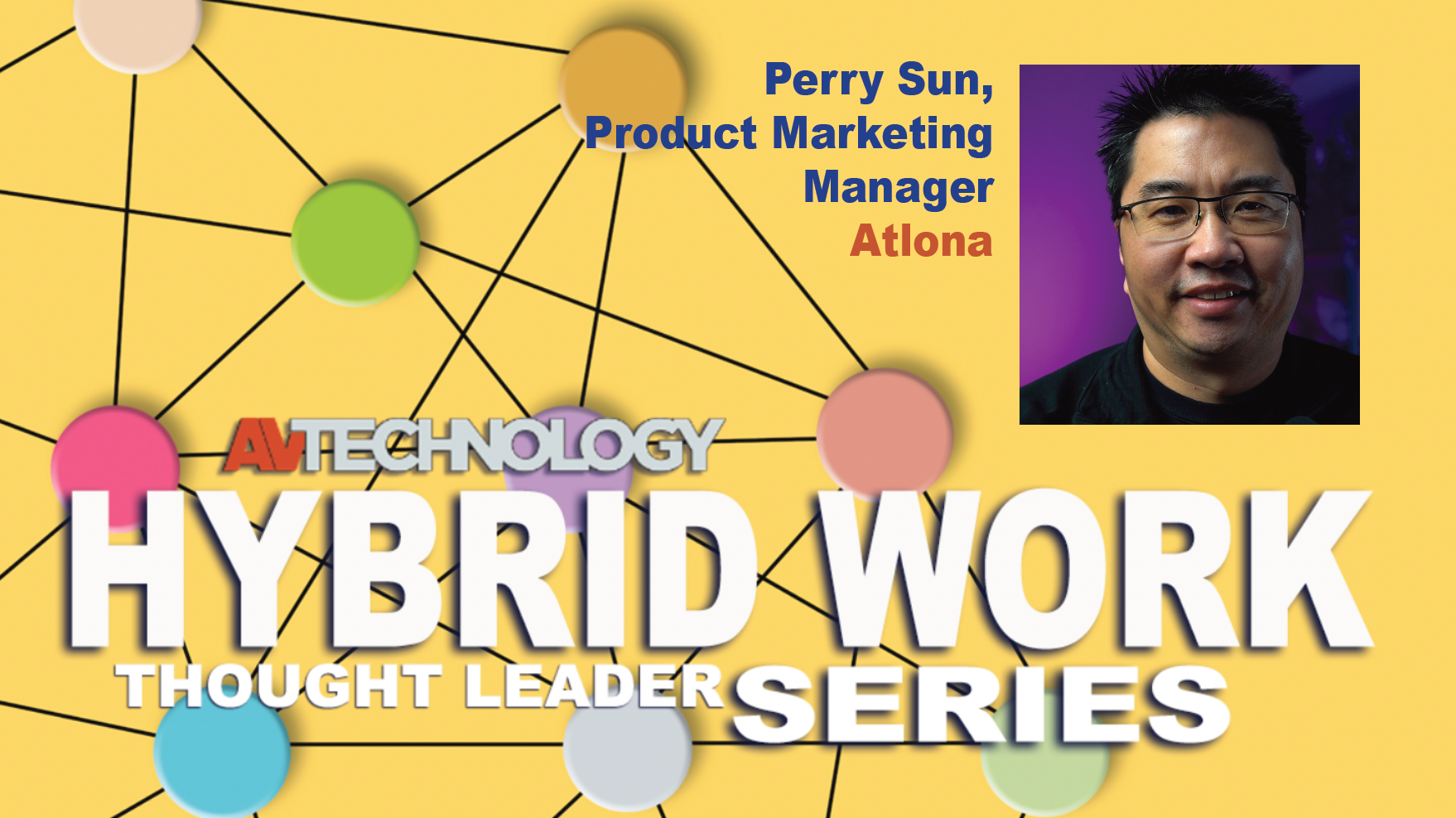AVT Question: Please share your insight into trends that will play a role in hybrid workplace culture, space planning, and technologies in 2024.
Thought Leader: Perry Sun, Product Marketing Manager at Atlona
In 2024, many if not most businesses, enterprises, and organizations have settled on plans for their remote working and return-to-office (RTO) policies. We continue to see significant demand for AV systems supporting in-person and hybrid meeting applications, including team collaboration and video conferencing. Additionally, many companies are reviewing and revising their strategic planning for meeting spaces and workplace configurations, which are likely to result in evolving requirements for supportive AV technologies.
We have observed from our customer base that for the workplace, the most prominent AV technology demands continue to be USB integration, wireless casting, and scalable AV distribution. Support for USB-C is a must-have for the proliferation of modern laptops and mobile devices with native USB-C interfaces. Also essential is the ability to ensure that USB hubs, extensions, and peripherals operate together as a cohesive system with solid reliability.
We continue to see significant demand for AV systems supporting in-person and hybrid meeting applications, including team collaboration and video conferencing." —Perry Sun, Product Marketing Manager at Atlona
Many workers continue to want the ability to share wirelessly from their screens. We expect this to grow significantly into the future, as the Wi-Fi 7 standard eventually becomes well-established, with ample capability to support 4K and even 8K video transmissions.
Systems integrators and consultants have been steadily adopting AV over IP as the platform for AV signal distribution. End-user customers have always wanted the ability to share content anywhere without limitations, which necessitates the signal routing flexibility that only networked AV technology can deliver. Increased awareness and data network competency are making AV over IP the platform of choice in most new system designs.
Atlona offers a range of AV product solutions for USB-C, wireless casting, and networked AV distribution that are readily adaptable as workplace requirements evolve over time. They’re designed for simple connect-and-present user operation, with automation available through occupancy sensing, and user control available from our intuitive touch panels and our new keypad controller.

